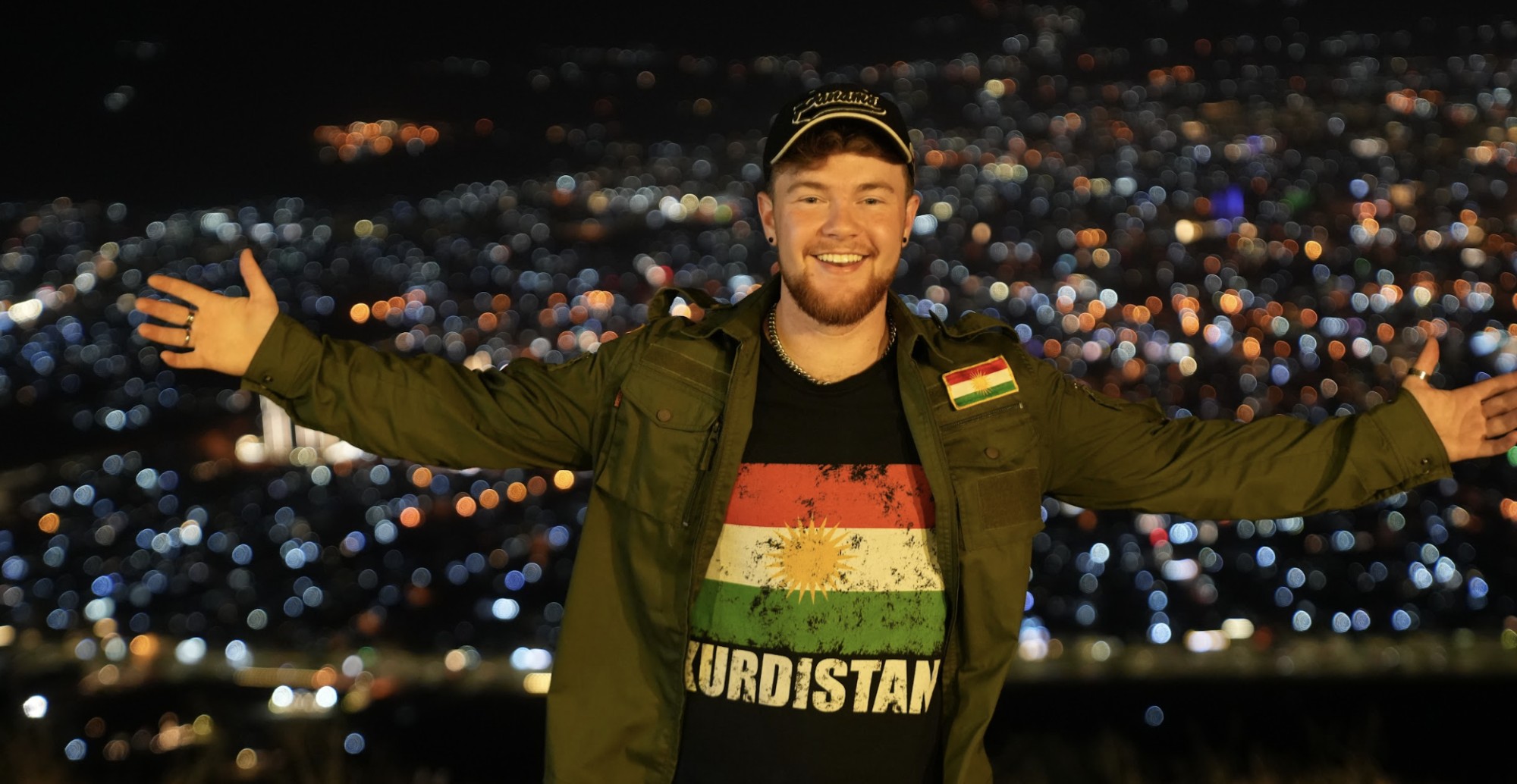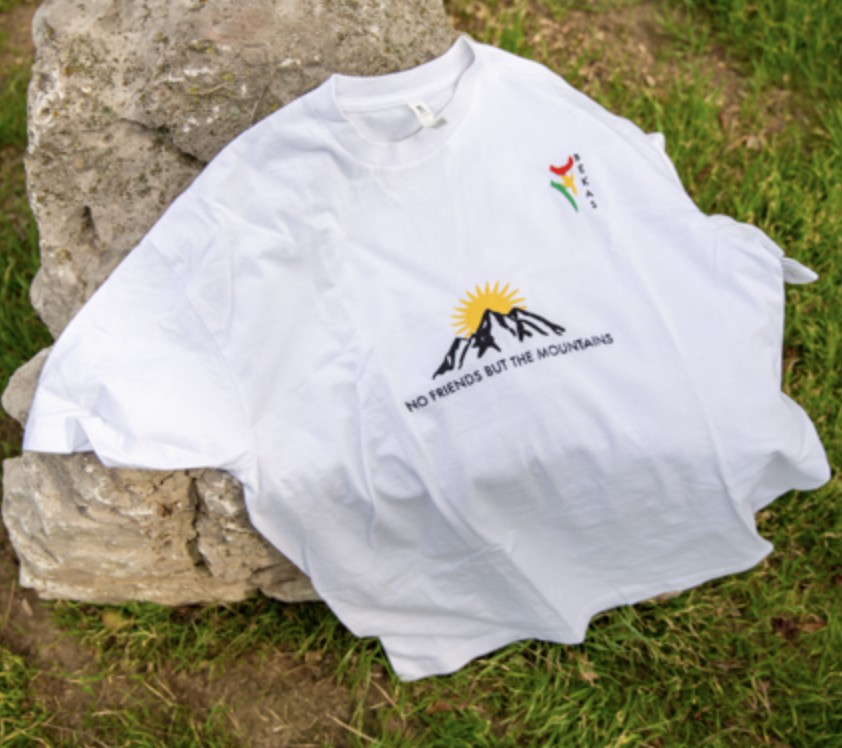In his studio on the outskirts of Erbil, master calligrapher Bjar Erbili is surrounded by the warm glow of creativity. He dips his delicate broad-edged nib and brushes in ink, his movements filled with the quiet focus of a man possessed by his passion. The room is a witness to his talent, adorned with samples of his work, such as beautifully written gold-painted verses of the Quran and poems by notable Kurdish and Arab poets. A single copy of the Quran holds a special place in the center of the room, on a big table; it is a copy of the Quran that Bjar wrote for Sheikh Khalifa bin Zayed Al Nahyan, the former president of the UAE.
“Without love, one cannot hope to find true success,” Bjar says, putting the finishing touches on his latest piece, his voice a gentle echo in this art-filled haven.
Bjar Kareem Salim, better known as Bjar Erbili, is a 61-year-old from Erbil, the capital of the Kurdistan Region. Born into a family that adored art and music, Bjar developed a love for calligraphy in his childhood. The word itself, derived from the Greek word for “beautiful,” kallos, meaning “the art of beautiful handwriting.”
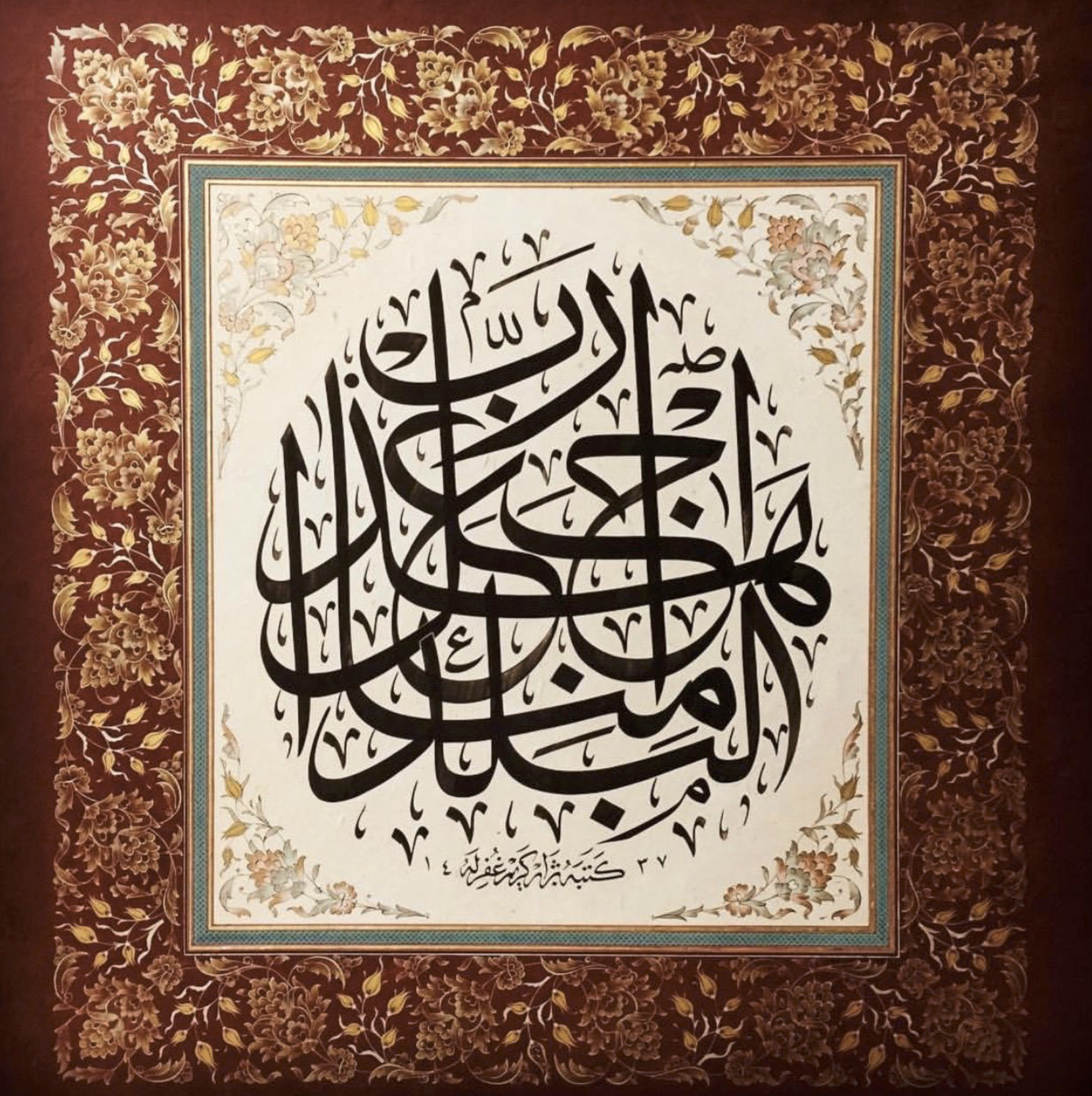
“Even as a child, teachers would seek me out, requesting that I write names for them in calligraphy,” he recalls, a hint of nostalgia in his voice.
After studying ceramics and sculpture at the University of Baghdad’s College of Fine Arts, Bjar decided to work as a calligrapher after graduation, which was his genuine passion.
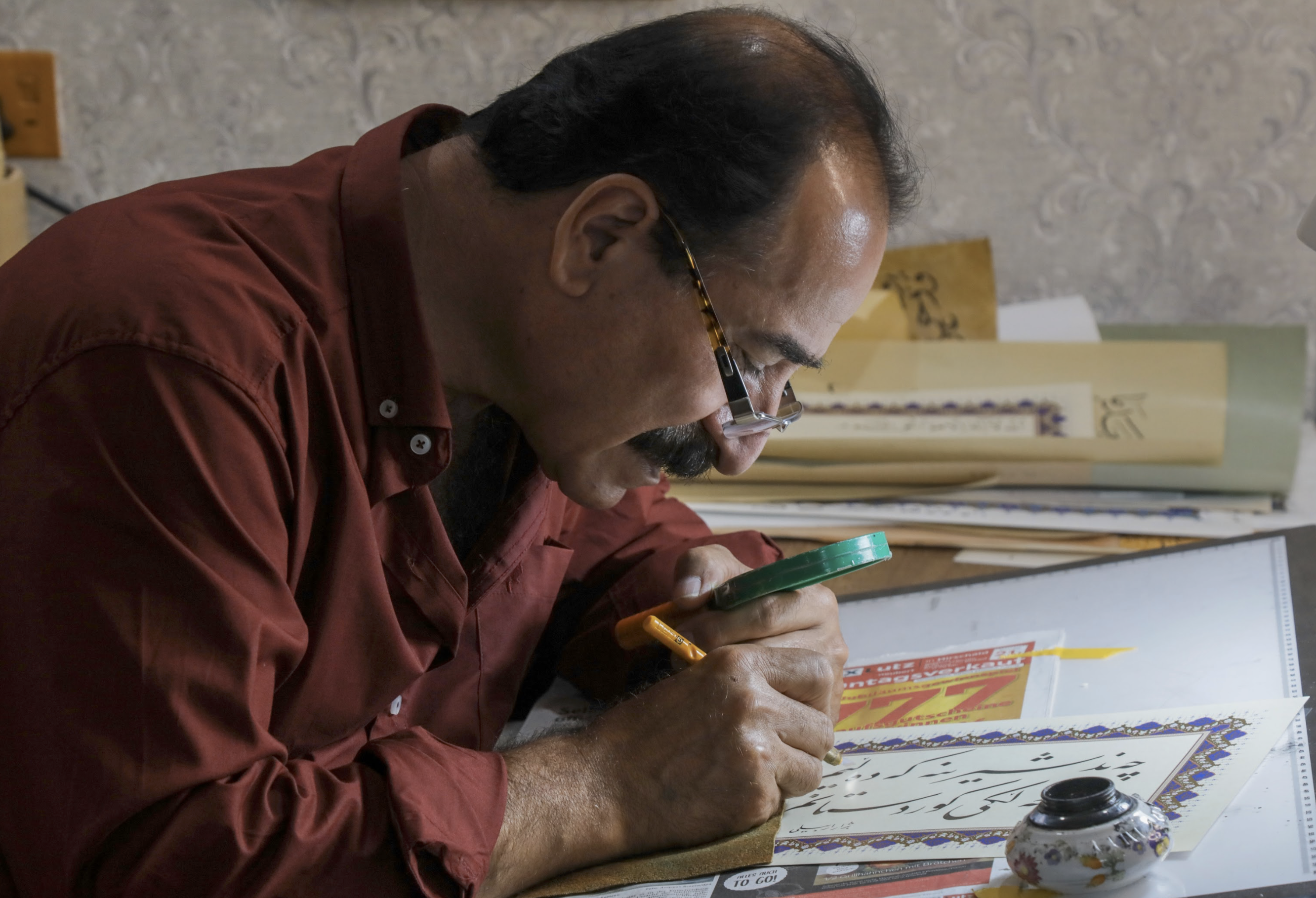
His talent has garnered him international acclaim, with awards adorning his achievements from prestigious competitions in Istanbul and Dubai. In 2012, a remarkable opportunity arose. From a pool of 128 exceptionally skilled calligraphers gathered in Dubai, Bjar was entrusted with the monumental task of crafting an edition of the Quran for Sheikh Khalifa commissioned by Dubai’s current ruler, Sheikh Mohammed bin Rashid Al Maktoum. The honor was a proof to Bjar’s exceptional understanding of the specific rules, styles, and order required for scripting the Quran.
It took Bjar three years to finish writing this calligraphic edition of the Quran, some two million copies of which have been printed and distributed in UAE.
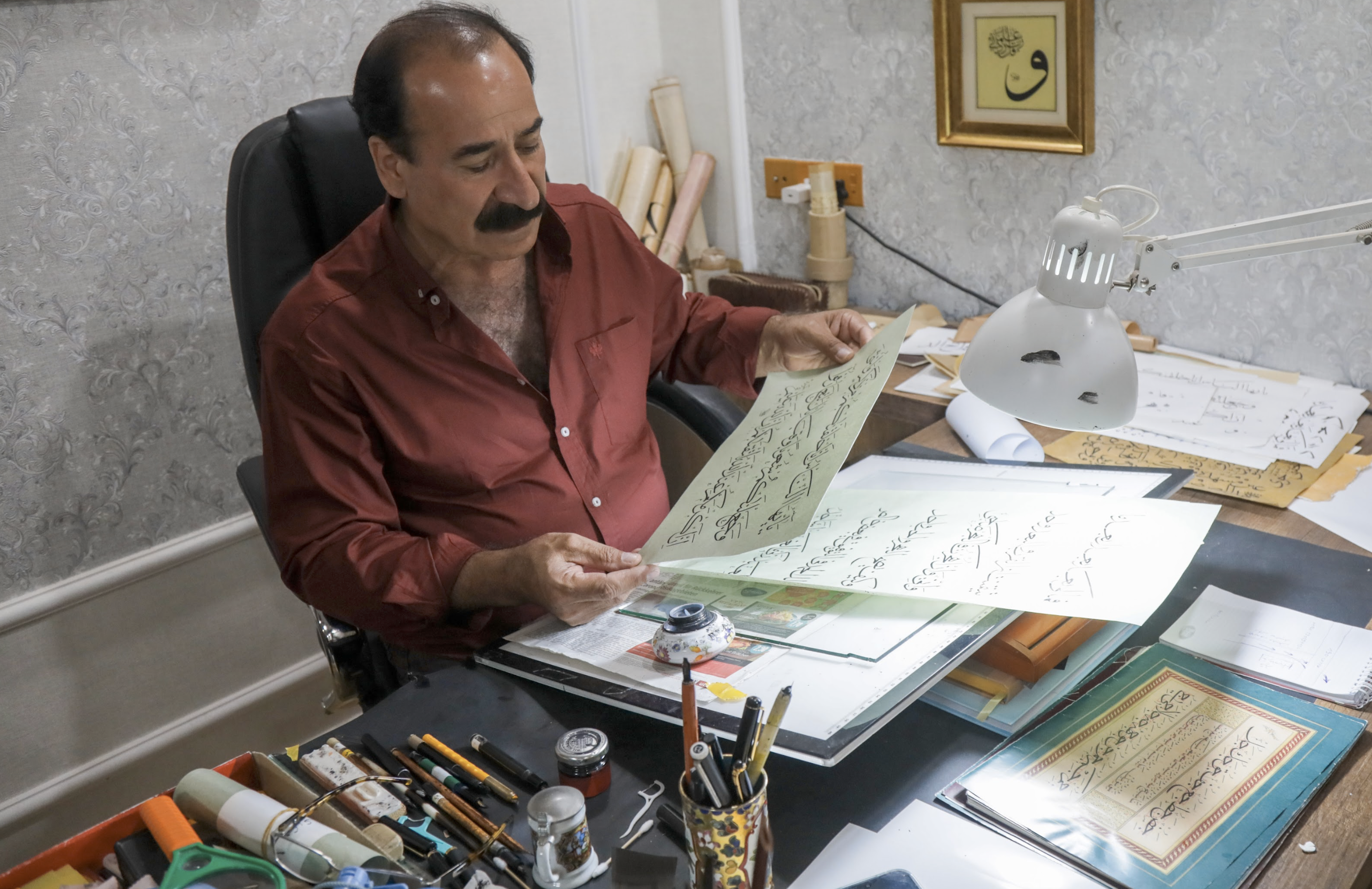
“Erbil has the finest calligraphers in the world”
Islamic calligraphy began in the 7th century in the city of Kufa in the south of Iraq as a method of creating copies of the Quran. Indeed, the earliest known examples of writing in the world were produced around 3,200 BC in Uruk in what is now Iraq, a testimony to the deep connection this region holds with the written word.
Bjar believes there is a reason calligraphy has flourished in Islamic culture. With the depiction of human figures discouraged, calligraphy offered a sublime alternative, a way to express the divine through the elegant dance of the script.
After the art first developed in Kufa, the Abbasid Caliphate founded a calligraphy school in Baghdad, followed by an Ottoman school in Istanbul, and Iranian schools in Isfahan and Tabriz.
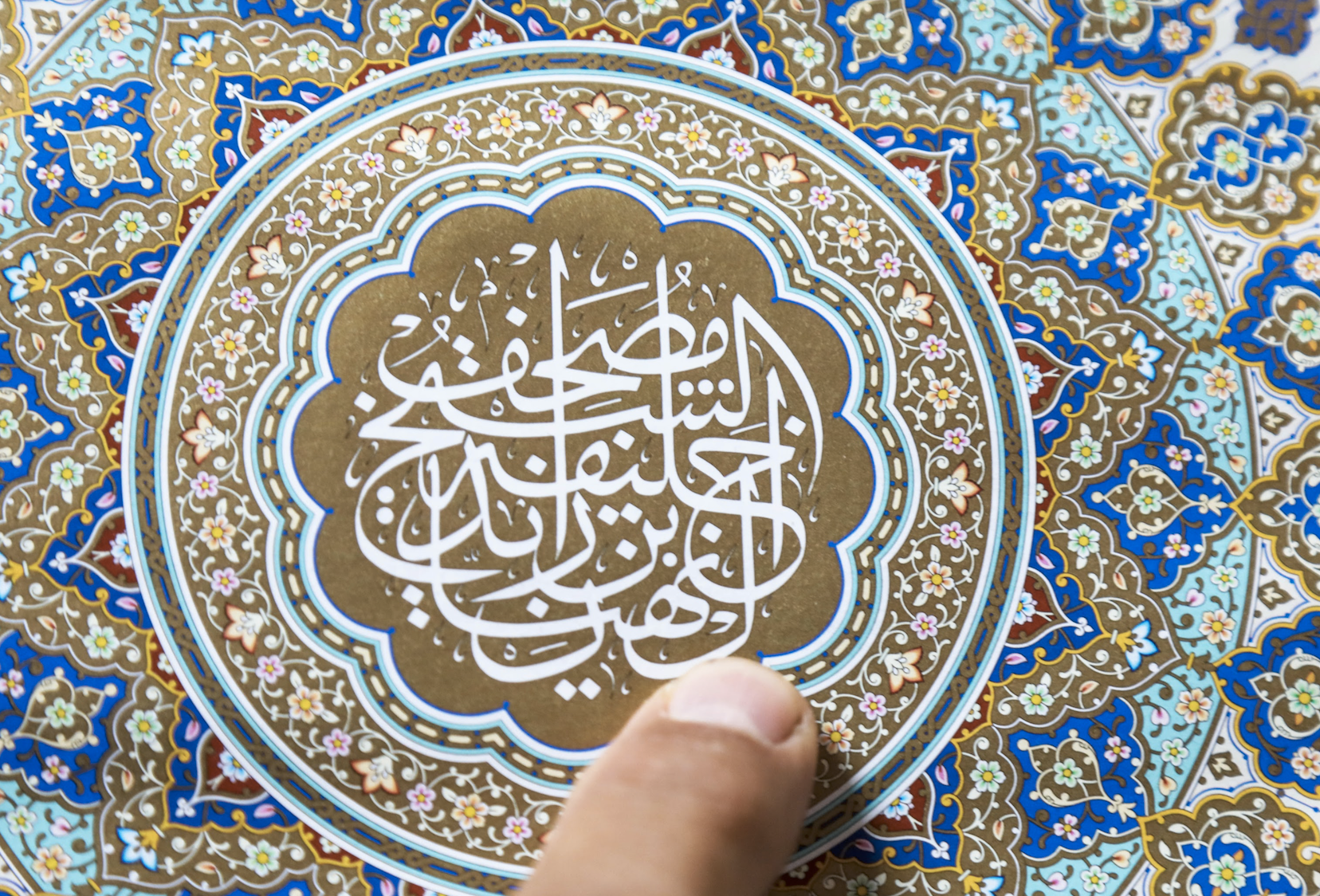
In 2018, Bjar founded Erbil Calligraphy School. “I established the school of Erbil because I strongly believe Erbil now has the finest calligraphers in the world,” he states with assurance.
The school is a vibrant hub, attracting dozens of aspiring artists from across Kurdistan. Membership transcends mere talent; Bjar seeks individuals who embody the values of humanity, peace, and coexistence. His vision is ambitious: to transform Erbil into a global calligraphy capital and a stage for international competitions. To achieve this, he hopes for support from the Kurdistan Regional Government.
He also hopes to write the Kurdistan edition of the Quran, as well as a compilation of poems by well-known Kurdish poets such as Nali, Ehmede Xani, and Haji Qadri Koyi.
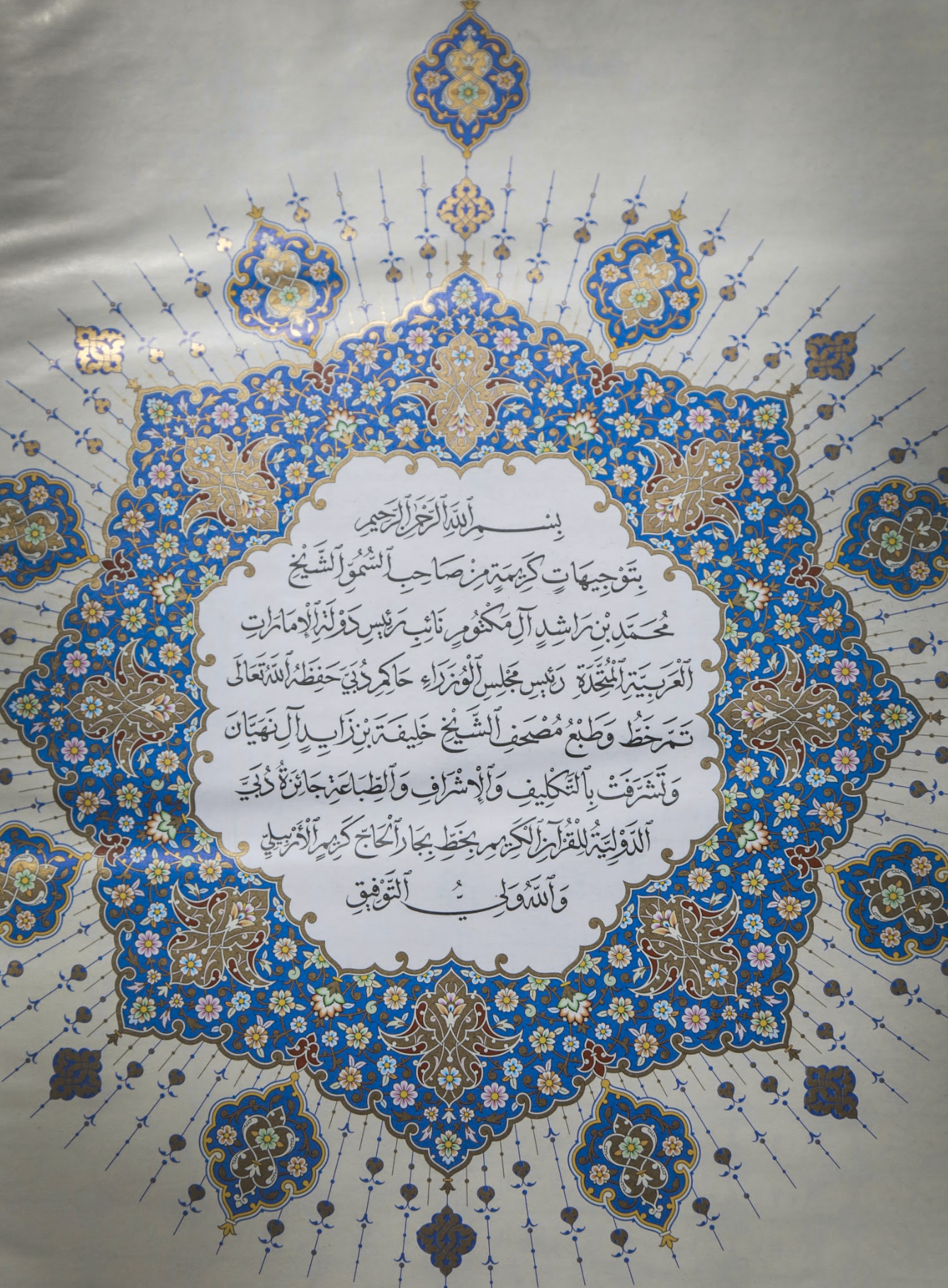
Twice a week, the air crackles with a quiet passion, as calligraphers gather at Bjar’s home. They discuss the perfect curve of a letter, the subtle weight of a word, the whisper of the brush against paper. Bjar, a devoted custodian, houses a collection of papers worth $20,000 – papers crafted to endure for over 200 years, each blank page a canvas for future masterpieces.
The calligraphers are not concerned with the future of calligraphy in the age of technology and artificial intelligence.

They remarked that calligraphy is similar to the art of weaving carpets; there is a significant difference in value and taste between a factory-made carpet and a hand-made carpet, and the same is true for writing.
And indeed, young blood continues to join the calligraphy ranks, drawn to the timeless art.
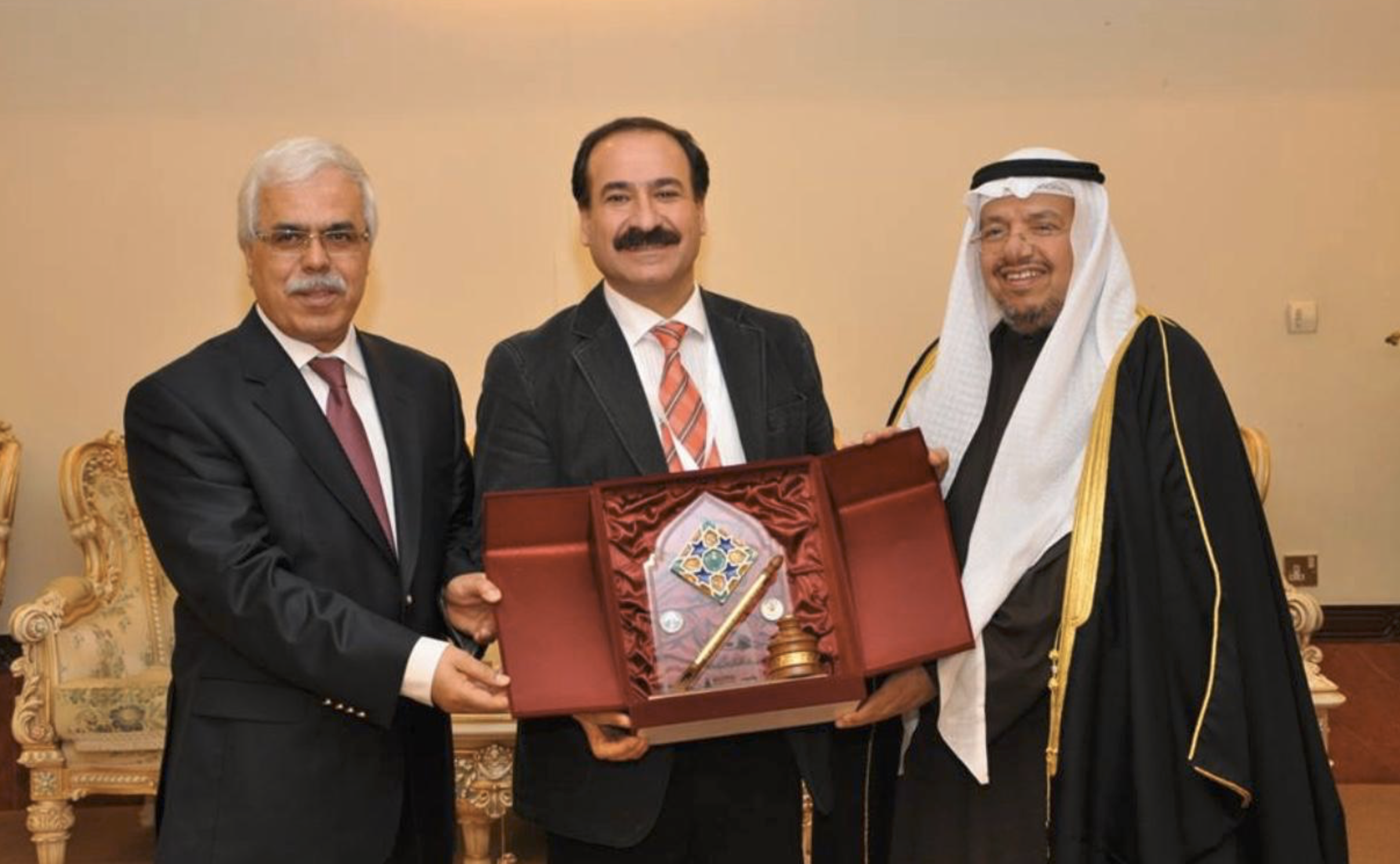
Qassim Khidhir has 15 years of experience in journalism and media development in Iraq. He has contributed to both local and international media outlets.
